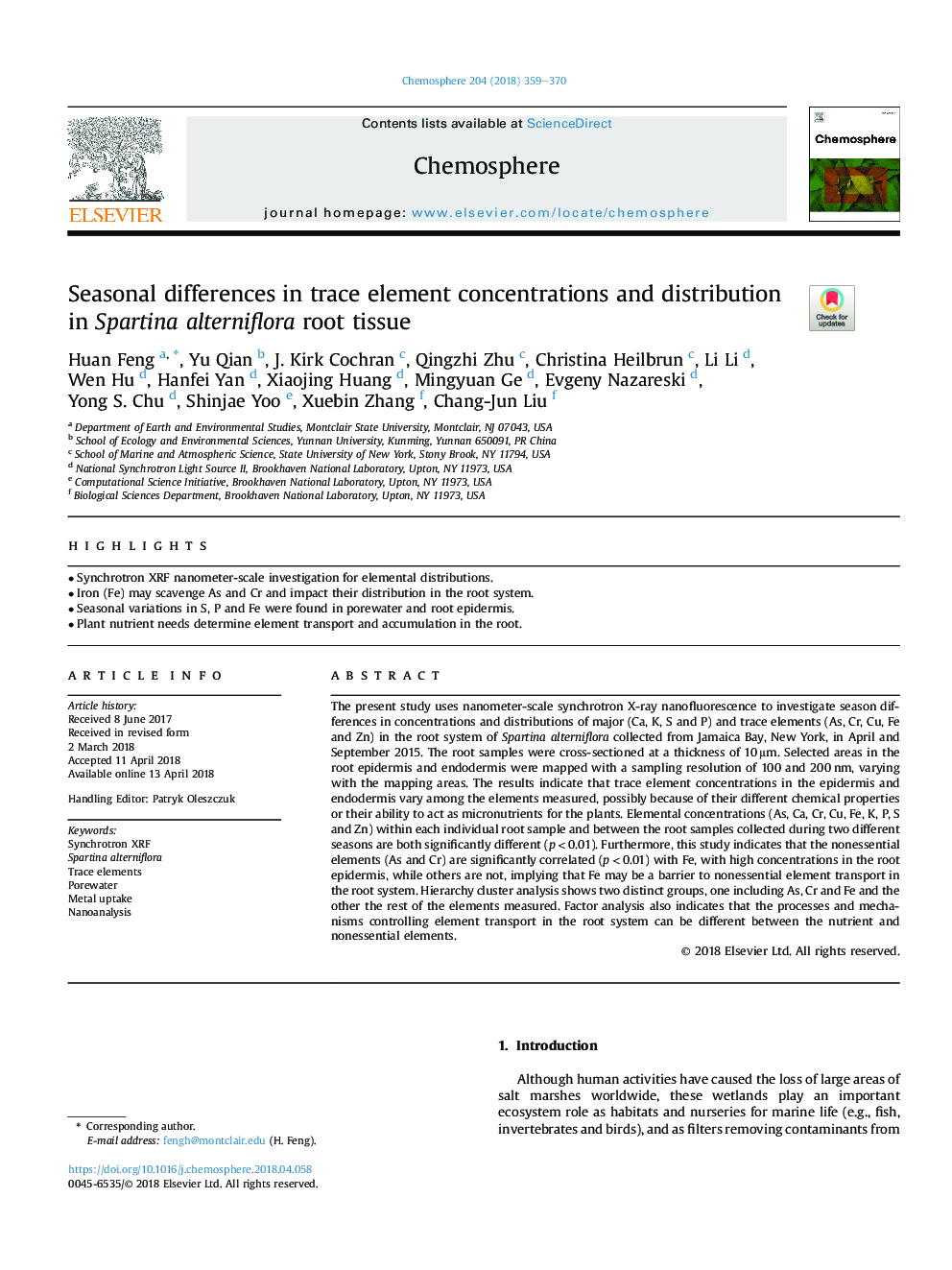| Article ID | Journal | Published Year | Pages | File Type |
|---|---|---|---|---|
| 8851122 | Chemosphere | 2018 | 12 Pages |
Abstract
The present study uses nanometer-scale synchrotron X-ray nanofluorescence to investigate season differences in concentrations and distributions of major (Ca, K, S and P) and trace elements (As, Cr, Cu, Fe and Zn) in the root system of Spartina alterniflora collected from Jamaica Bay, New York, in April and September 2015. The root samples were cross-sectioned at a thickness of 10â¯Î¼m. Selected areas in the root epidermis and endodermis were mapped with a sampling resolution of 100 and 200â¯nm, varying with the mapping areas. The results indicate that trace element concentrations in the epidermis and endodermis vary among the elements measured, possibly because of their different chemical properties or their ability to act as micronutrients for the plants. Elemental concentrations (As, Ca, Cr, Cu, Fe, K, P, S and Zn) within each individual root sample and between the root samples collected during two different seasons are both significantly different (pâ¯<â¯0.01). Furthermore, this study indicates that the nonessential elements (As and Cr) are significantly correlated (pâ¯<â¯0.01) with Fe, with high concentrations in the root epidermis, while others are not, implying that Fe may be a barrier to nonessential element transport in the root system. Hierarchy cluster analysis shows two distinct groups, one including As, Cr and Fe and the other the rest of the elements measured. Factor analysis also indicates that the processes and mechanisms controlling element transport in the root system can be different between the nutrient and nonessential elements.
Related Topics
Life Sciences
Environmental Science
Environmental Chemistry
Authors
Huan Feng, Yu Qian, J. Kirk Cochran, Qingzhi Zhu, Christina Heilbrun, Li Li, Wen Hu, Hanfei Yan, Xiaojing Huang, Mingyuan Ge, Evgeny Nazareski, Yong S. Chu, Shinjae Yoo, Xuebin Zhang, Chang-Jun Liu,
